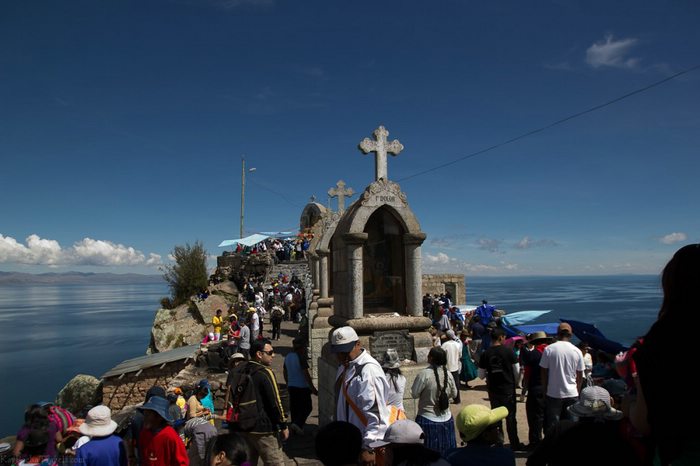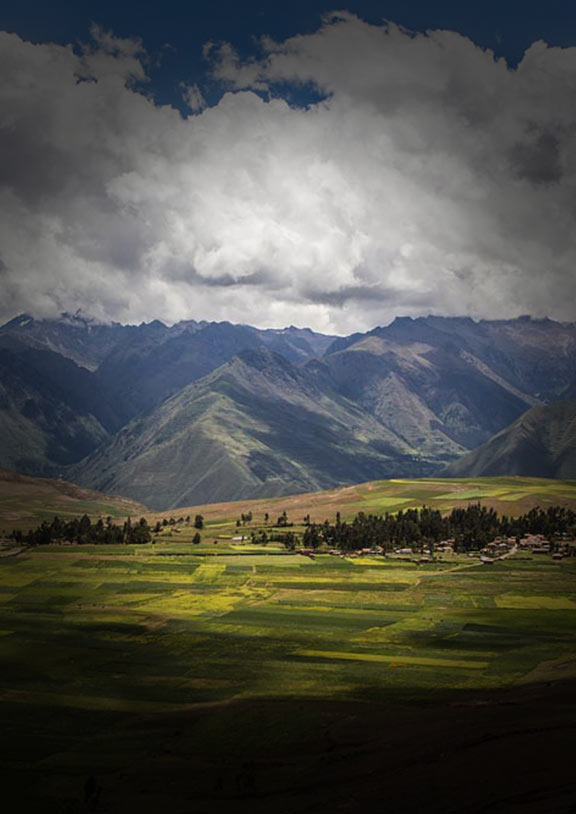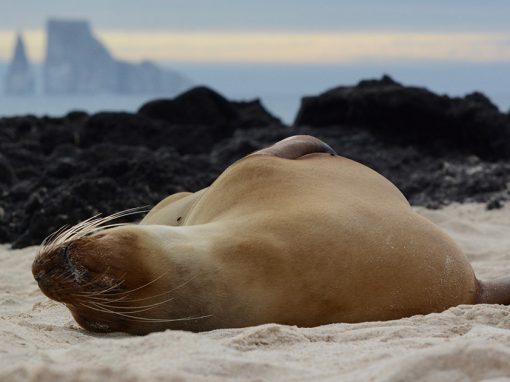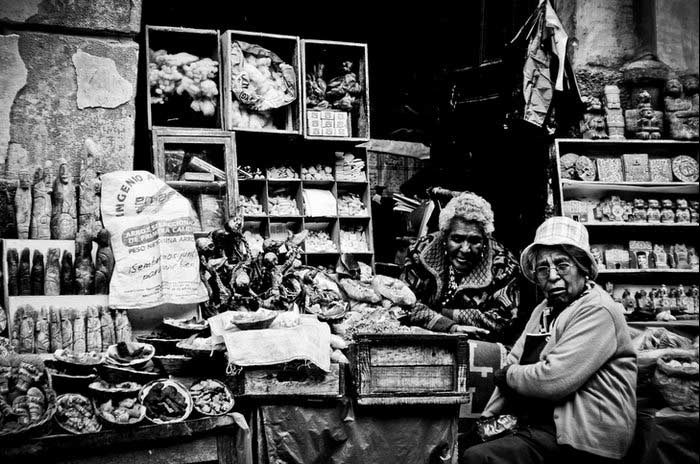It is hard to overstate the importance of Semana Santa (Holy Week) in Latin America. Most countries, boasting large populations of Catholic believers, approach the liturgical death and resurrection of Christ as an occasion for great, albeit somber, festival-making. Regardless of whether you plan your South America vacation to coincide with this religious event, you’re quite likely to run into some sort of procession, celebration, or reenactment filling up the streets of your chosen destination. If you are the type of traveler who loves to be swept up in traditional cultural practices, Semana Santa offers unparalleled opportunities to do just that.
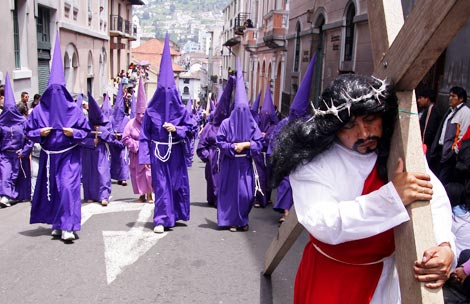
Quito boasts one of the most fervent and colorful Holy Week processions in South America. The purple-robed and masked men are known as “cucuruchos.”
Semana Santa is a huge source of internal, domestic tourism in South America. Much like schools in the U.S. allow students a week off for Spring Break, national governments grant feriados largos (extended holidays) so that people can take advantage of a long weekend to travel. Some domestic travelers make a pilgrimage to the nearest religious celebration, but others choose to get out of town to the nearest beach or mountain getaway. In major Semana Santa destinations, hotels can book up months in advance, major streets or public spaces can be blocked off to car traffic, and specific attractions may also be closed to “tourists” if such venues are being used by religious celebrants. (For example, the Cusco Cathedral is closed for tourism, but inconspicuous travelers may still gain admission.)
Travel during this time can be a special and intense experience, an opportunity to not just observe but also to become immersed in deeply-felt cultural traditions that are explicitly intended to rouse practitioners into even more passionate faith. We’ve already covered Easter celebrations in Peru; today, we profile other Holy Week festivities in South America.
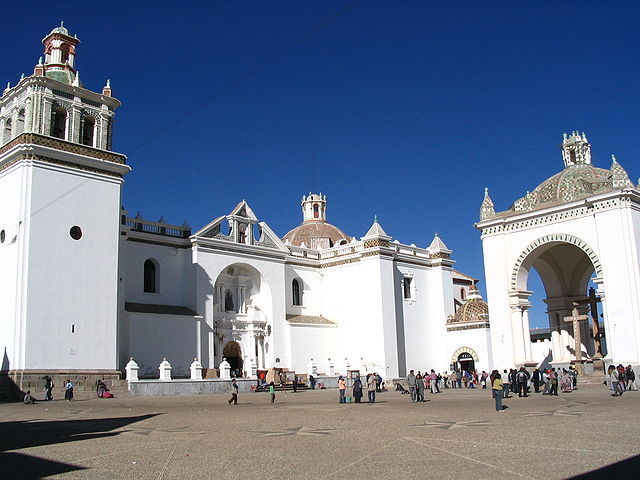
Thousands of pilgrams travel to the monumental, white-walled Basilica of Our Lady of Copacabana, one of Bolivia’s most important religious shrines. The interior is decorated with art from the Cusco School as well as a hallowed wood carving of the Virgin of Copacabana.
Holy Week in Copacabana, Bolivia
The small town of Copacabana, a top destination for Bolivia tours located on the shores of Lake Titicaca, draws thousands of Bolivians for a celebration without equal. Its most distinctive feature is an annual 150-kilometer pilgrimage from La Paz to Copacabana. Thousands of self-chosen pilgrims traverse the distance on foot, a journey of about 2 days, as a sign of penance and sacrifice. Several thousand other believers arrive in Copacabana by car, bus, and other means for 3 days of processions, religious rites, and sermons ending on Easter Sunday.
Copacabana is host to 2 important religious sites. The Basilica of Our Lady of Copacabana is a monumental baroque church, built on the site of the original 16th century sanctuary to the Virgin of Copacabana. She is the patron saint of Bolivia and revered especially by Aymara believers because of her indigenous facial features, evident is a wooden sculpture crafted by Francisco Tito Yupanqui (grandson of the Inca Tupac Yupanqui). Cerro Calvario, the hill rising above Copacabana, has the 14 Stations of the Cross where pilgrims arrive to pile rocks – each rock represents one sin – on top of each monument.
Semana Santa in Quito & Ecuador
Throughout Ecuador, Semana Santa is celebrated with ritual-infused processions, music, and food. Quito, the capital city, sees a huge procession on Good Friday dedicated to “Jesus del Gran Poder.” The streets of the historic center are filled with multitudes and the faithful carry huge heavy statues of Jesus and Virgin Mary encased in crystal urns and mounted on platforms that they hoist onto their shoulders. Men dress as cucuruchus, wearing purple hoods and robes, crowns of thorns, and chains around their ankles, all symbols of penance. The procession departs from the historic San Francisco Church and winds a route through the old city center.
Food is a definite highlight of Holy Week in Ecuador, and a dish known as fanesca occupies a central place at the dinner table of most families. Fanesca is a stew made especially for Lent – a period during which consumption of meat is expressly prohibited – and consists of fish (usually bacalao, or salt cod), lentils, beans, corn, milk, eggs, and cheese. Other common ingredients are vegetables, peanuts, and various seasonings, and fried plantains are usually added as a topping, but the preparation of the stew varies according to region and even family to family.
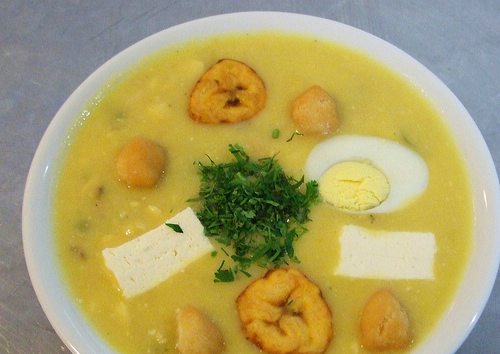
One traditional recipe for fanesca calls for 12 ingredients, one for each apostle; the fish represents Christ. Food is a highlight of travel to South America during Semana Santa.
An Excuse to Vacation in South America
As mentioned, less observant South Americans use the holiday as an occasion to spend time with family and friends, to go on vacation, and to pursue relaxation. Brazil is one of South America’s most Catholic countries; but religious affiliations aside, residents are more likely to plan an escape to the countryside and to the nearest beach than to a church. Uruguay, the small country sandwiched between Brazil and Argentina, is one of the most secular nations on the continent. If you’re on vacation in Uruguay, you might notice that “Holy Week” has been officially renamed Semana de Turismo (Tourism Week) and indeed domestic travel is greatly encouraged. Meanwhile, Argentina keeps their celebrations family-oriented. On Easter Sunday, families and friends gather round the table to eat seafood-based dishes, although it’s also acceptable to enjoy a traditional asado (grilled meat served buffet style).
That said, in any of the above mentioned countries, there’s still a chance that you might stumble upon an Easter-related event. During most of the year, Puerto Madryn, also known as the Scuba Diving Capital of Argentina, is a top destination for marine wildlife lovers who come to spot migrating Southern right whales. But during Holy Week, Puerto Madryn is famous for an underwater reenactment of the Passion of Christ. Forty wet-suited scuba divers jump into the bay bearing a wooden cross, while the priest, equipped with a hydrophone, recites prayers once everyone is submerged in the bay.
Contact an expert travel advisor at Latin America For Less to start planning your exciting vacation to South America. All our travel packages and tours are fully customizable to meet your needs.
Anabel has been exploring the length and width of South America since 2010. Ditching preconceptions, settling into the local pace, and embracing the unexpected are the tenets of her philosophy of travel – and life.

